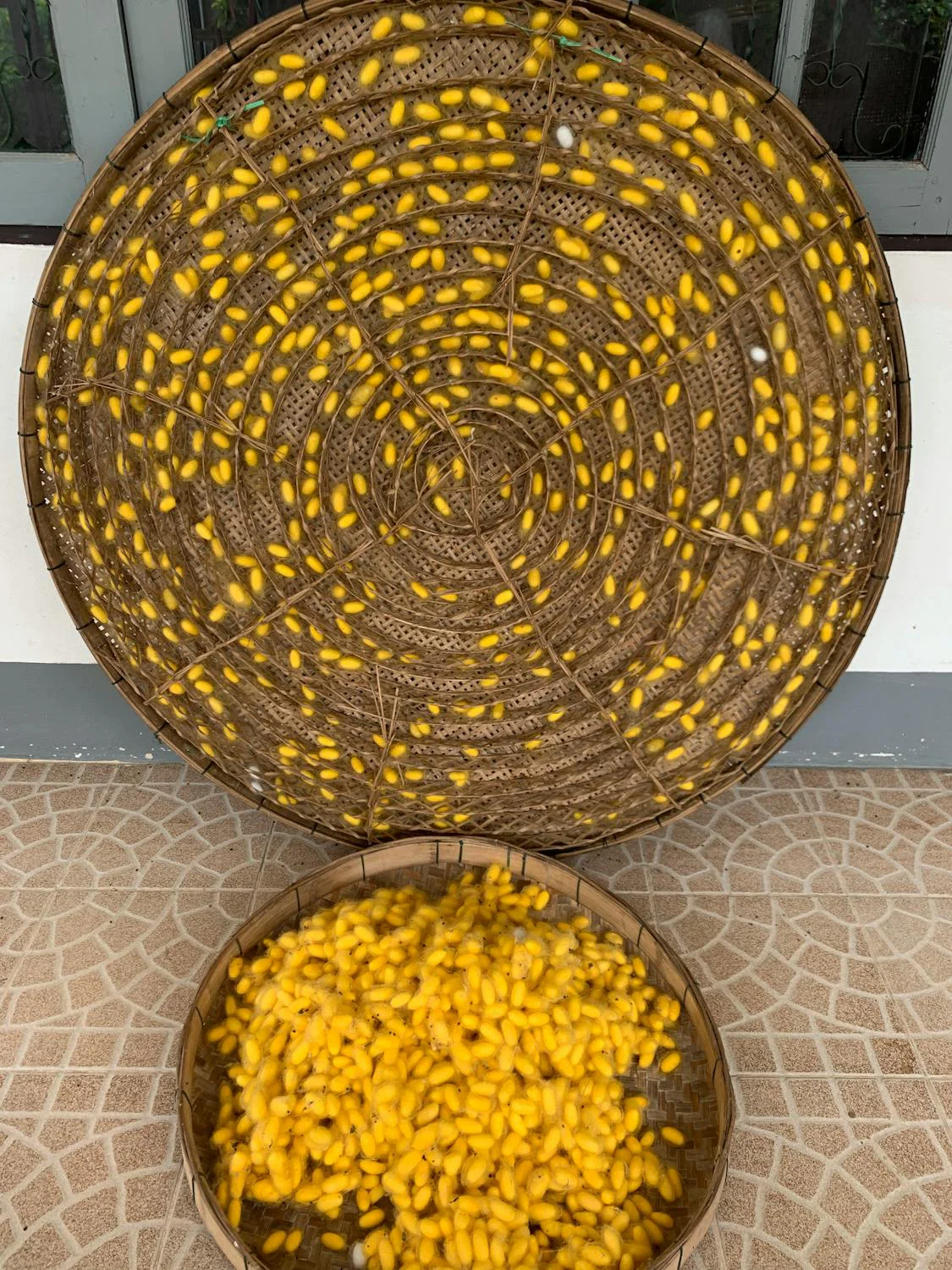Why I won’t offer silk to clients
Silk is beautiful. Silk is luxurious. But what is the cost?
Silk is natural and biodegradable. It takes dye extremely well, including eco-friendly vegetable dyes, and often comes in stunning jewel-like colours.
It also has many health benefits, due to its natural antibacterial and hypoallergenic properties.
Considered a delicate fabric, silk thread is actually the strongest natural fibre in the world.
It therefore ought to be one of the best fabrics that I can offer my clients. So why don’t I?
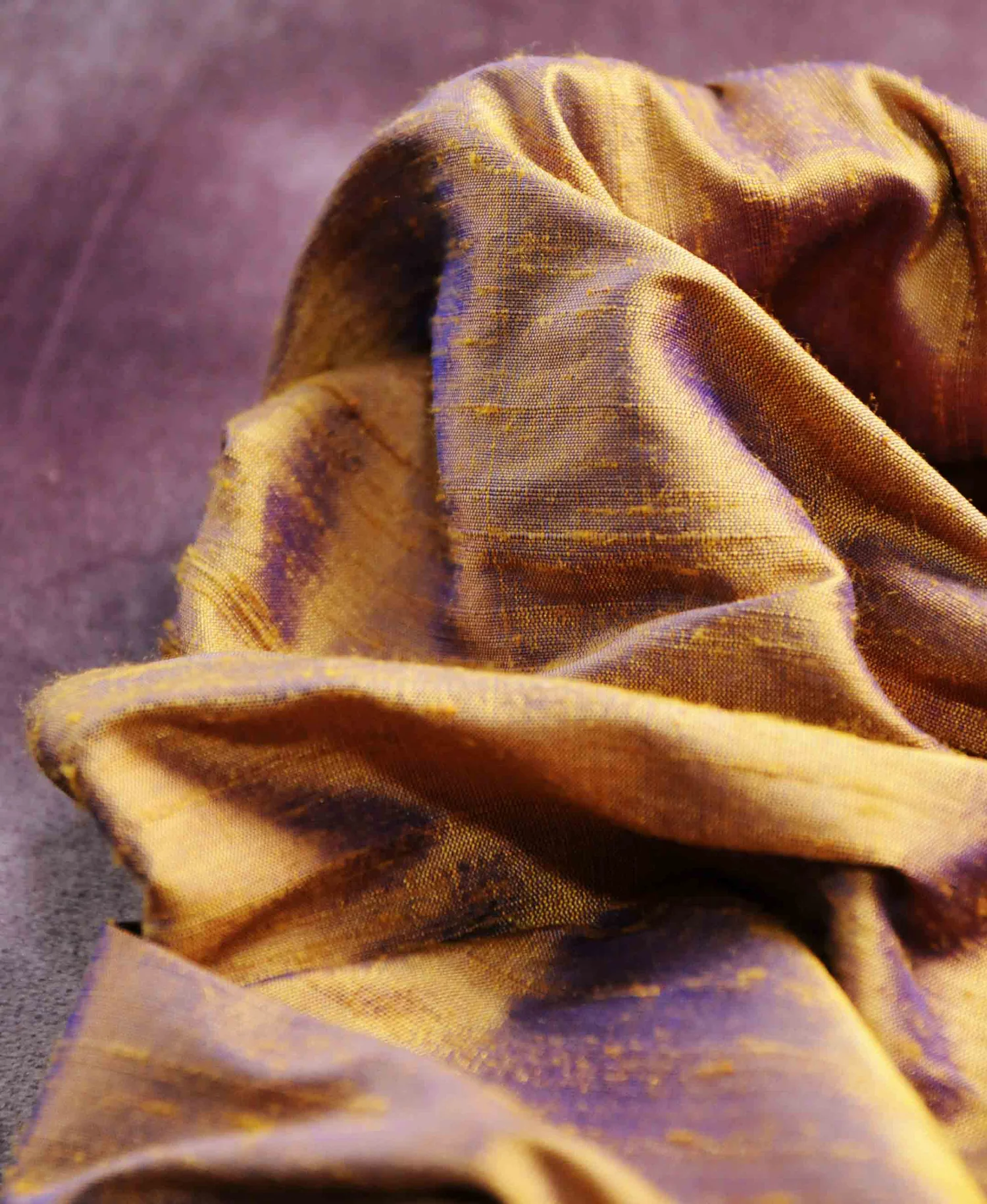
Let’s start with what a silkworm is
Although termed ‘worms’, silkworms are in fact caterpillars – the young of the Mulberry Silk Moth.
The species used in silk production is Bombyx mori, which was domesticated around 5,000 years ago. It was bred by humans to have a larger cocoon size, bigger body and faster rate of growth than its wild cousin Bombyx mandarina. However, unlike its wild cousin, the domesticated silk moth cannot fly and is completely reliant on humans to live.
The entire lifecycle of the mulberry silk moth, completes in just 6 – 8 weeks, depending on the temperature of the country.
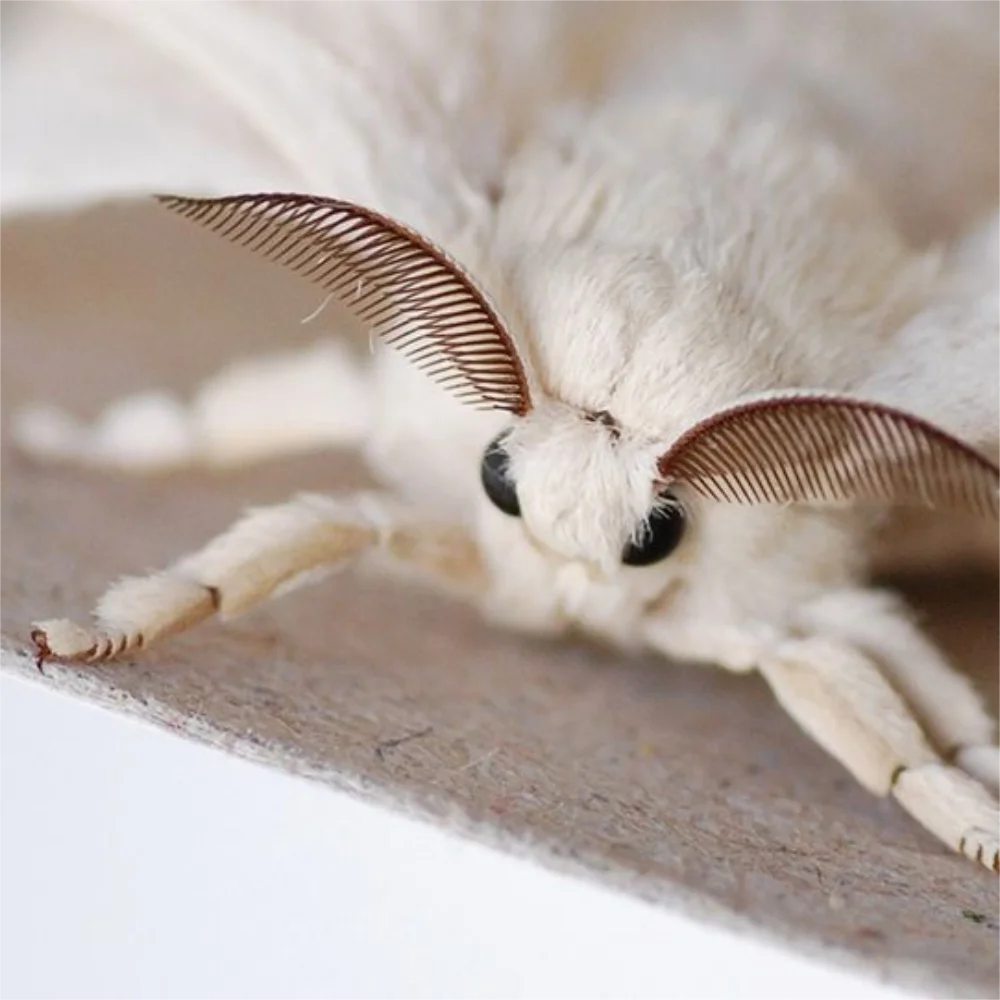
An adult female moth lays 300 – 400 tiny eggs on the leaves of a white mulberry tree; she dies 3 – 4 days later as is common in insect world. The eggs hatch into larval caterpillars which consume copious amounts of leaves from the host tree.
Once a caterpillar gets to about 8cm long, it will stop feeding and begin spinning a cocoon of silk around itself, a process which takes 2 – 3 days. It spins one continuous strand of raw silk, an astonishing 300 to 900 metres in length. Once inside this protective silk cocoon, the caterpillar will transform into a pupa. After 10 – 14 days, the adult Silk-Moth will emerge.
So what happens to silkworms in silk production?
The single filament of silk that makes up one cocoon can measure an impressive kilometre in length!
To break out of its cocoon naturally, an emerging silkmoth releases enzymes to break down the strong silk fibres. But this turns that one continuous strand of silk into short segments of random length, which have no use to the silk industry. The silk becomes worthless.
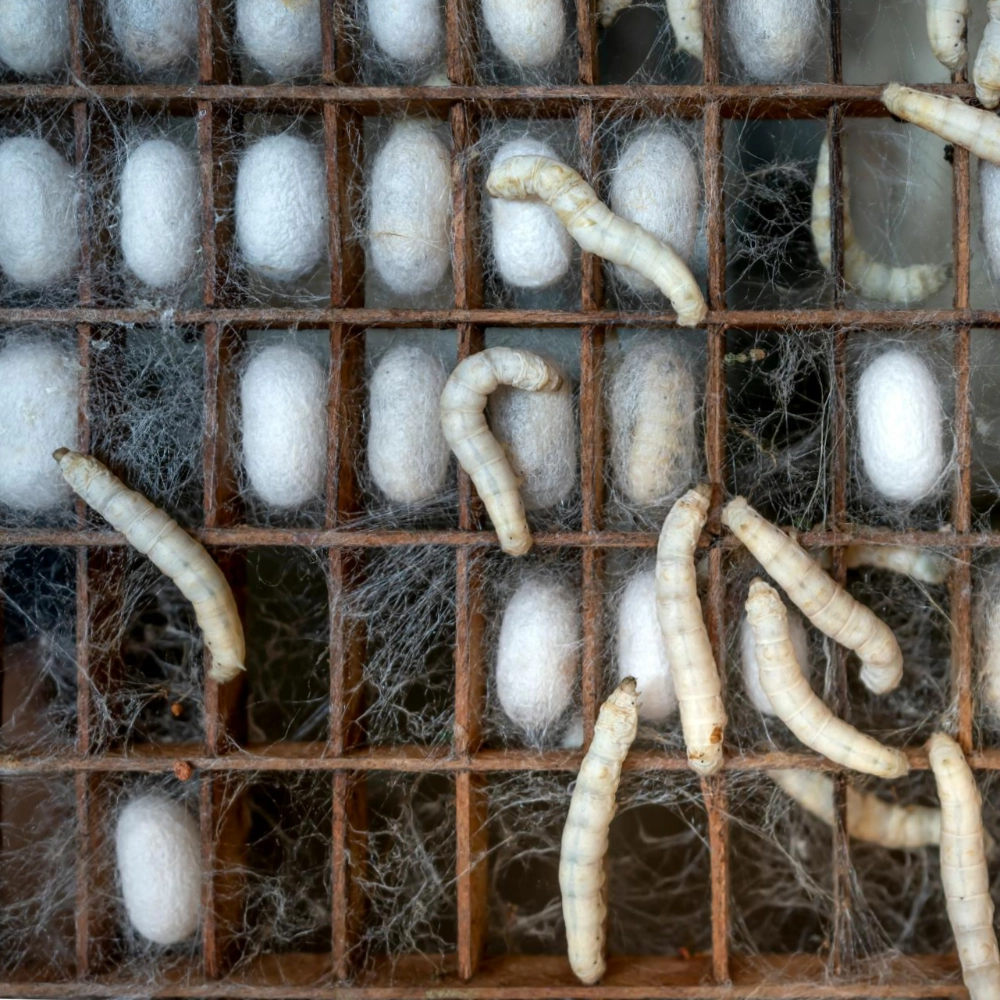
To prevent this, in sericulture (raw silk production), the vulnerable silkworm must die before it can escape. So they are boiled alive whilst still inside their protective cocoons, which is a painful way to die.
The uncomfortable reality is that a staggering 6,000 silkworms are killed, just to make 1 yard of silk fabric.
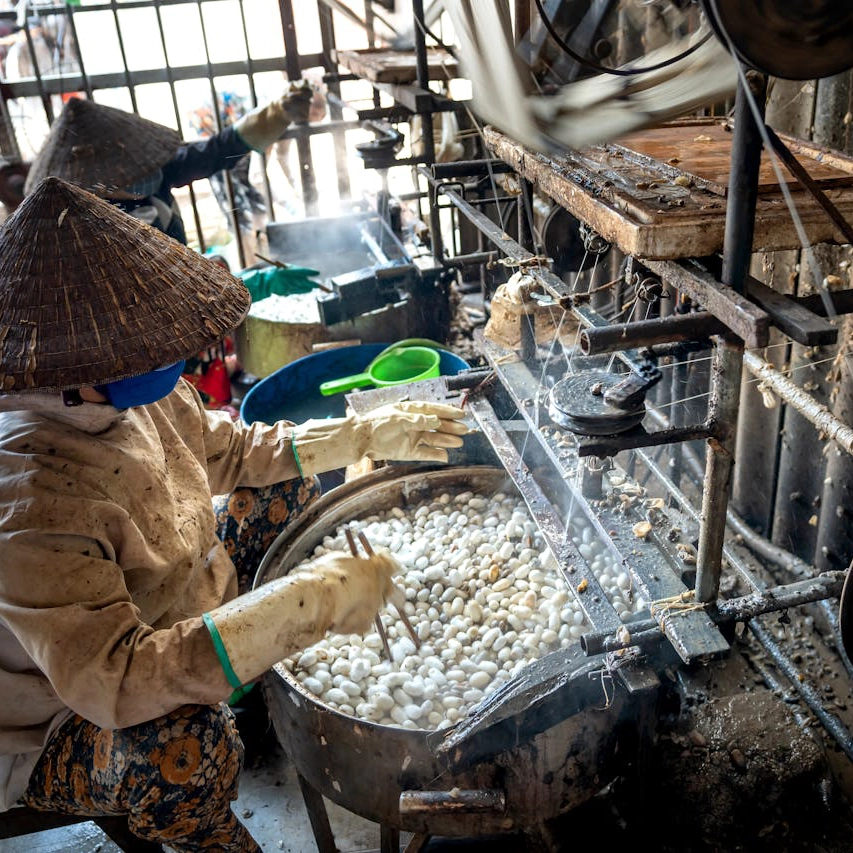
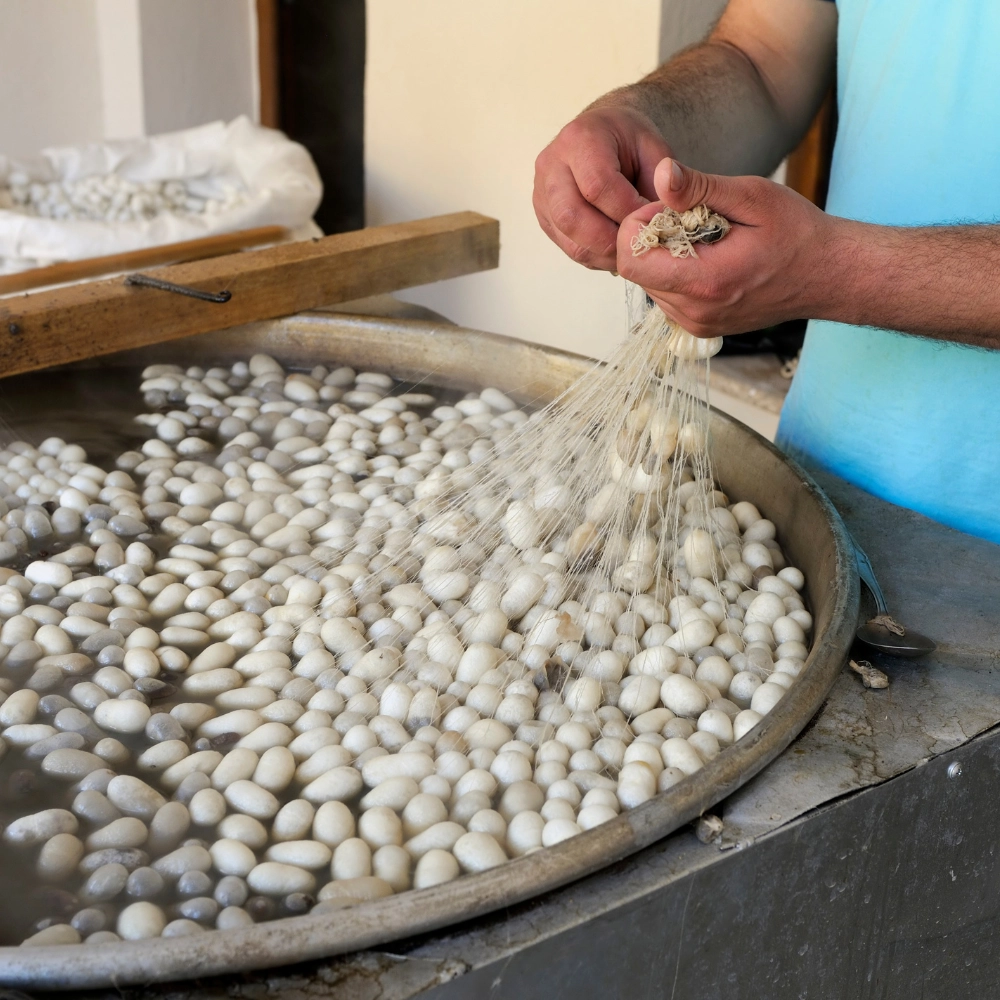
What about Peace Silk instead?
Animal welfare and rights activists criticise silk production, and have been calling for its ban for years. So an alternative silk production has been born… Ahimsa silk, or ‘peace silk’. Ahimsa is an ancient Indian principle, meaning non-violence. It is about respecting living beings and avoiding injury and suffering.
Ahimsa silk is promoted as being cruelty free. But there’s more to it.
In Ahimsa silk production, the moths are allowed to leave their cocoons, and most are let loose into the wild. But a domesticated silk moth can’t fly, which means it cannot find a mate. So it drops to the ground and dies, before it has fulfilled its ultimate purpose – to breed. This final stage of their natural lifecycle never happens.
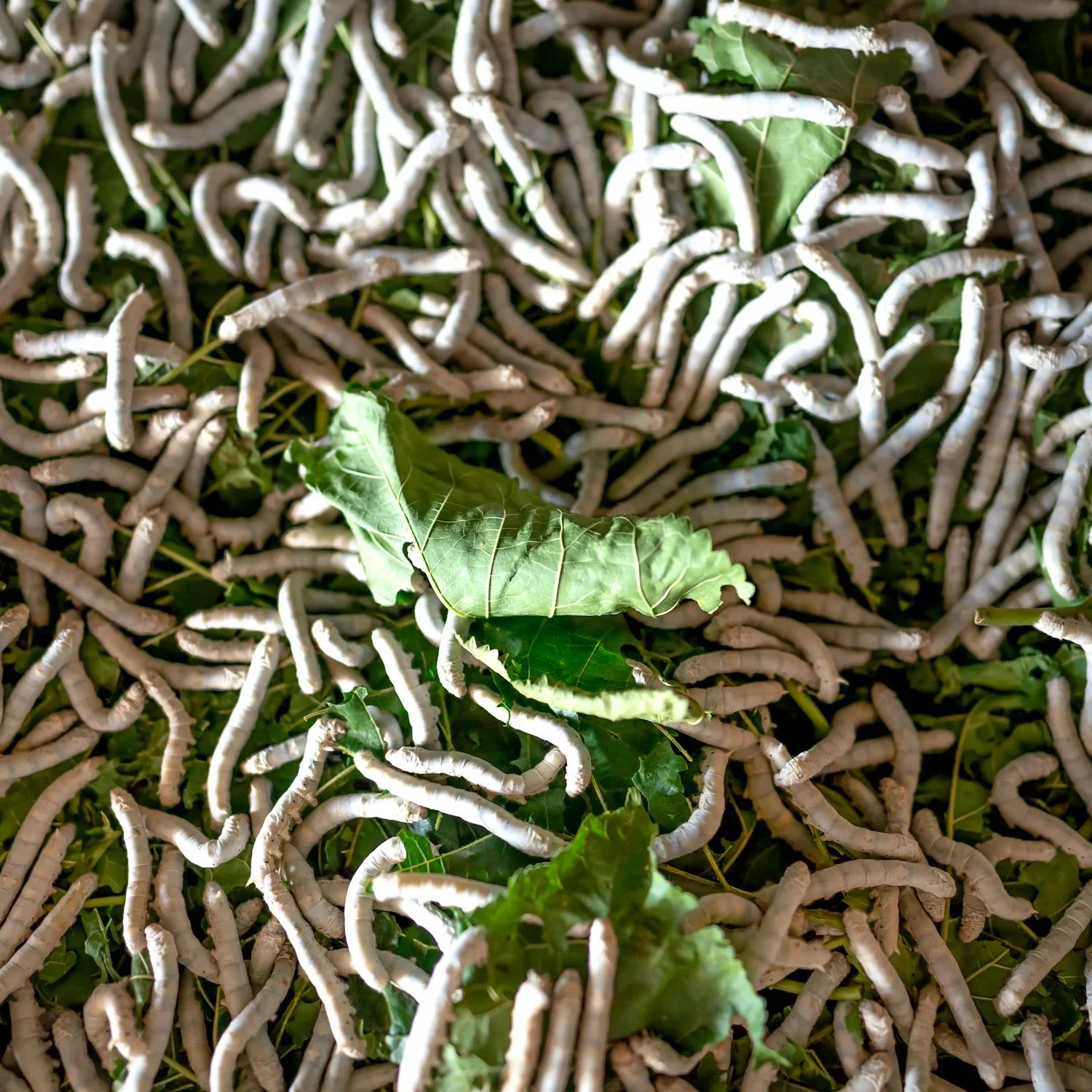
Just as in normal silk sericulture (silkworm farming), some male and female moths are kept in a semi-frozen state, in readiness for the breeding season. But because the silk moth cannot fly or move naturally, human intervention is needed so they can mate.
The males are thrown out once they have mated. The females are crushed to test for disease. If disease is found, then her eggs are also destroyed.
Conclusion
A female silk moth would naturally die a few short days after emerging from her cocoon. First she will mate, then lay her eggs, and finally die, as is the life for many in the insect world. A silk moth has no mouth parts, and therefore does not have the ability to eat. She would have consumed all the nutrients she needs for her short life as a moth, when she was still a caterpillar.
You could argue that, even in the natural world, she would have starved to death anyway. Or, because the domesticated silk moth’s fear of predators has been bred out, she would likely have been eaten so is part of Mother Nature’s food chain.
Some would point out that silk moth larvae are a nutritious food commodity for humans, so the larvae don’t go to waste. You could say that silk thread is perhaps a byproduct. In the same way that hide is a natural byproduct of the beef industry. I don’t quite agree with that.
So, for now, I feel uncomfortable with silk as a product in interior design. The fact that trillions of moths are intensively farmed and then killed every year, just to make a luxury product for humans, leaves a pit in my stomach.
That’s why I do not offer silk to clients.
